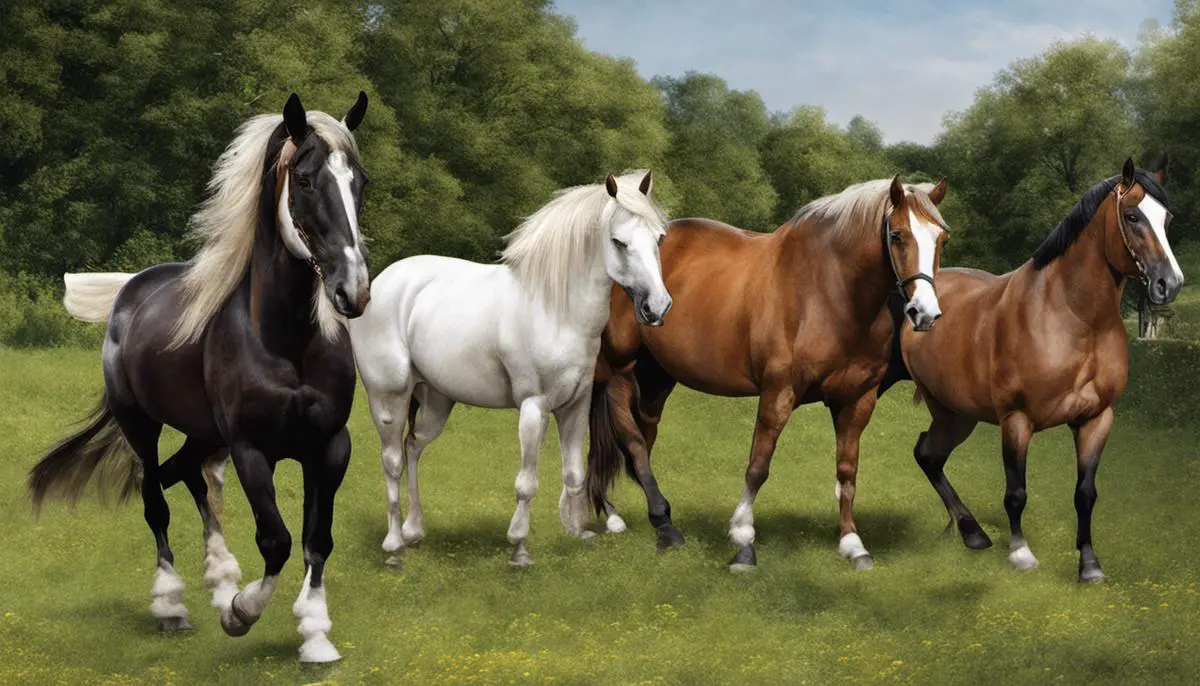Delving into the equine world, one can’t help but admire and be fascinated by the strength, endurance, and grace of Coldblood horses. Especially in Germany, the presence of these majestic creatures holds a particular historical and cultural significance. Embedded in the heritage of German society, Coldblood horses stand as a genuine testament to the nation’s age-old tradition of comprehensive breed development and horse rearing. From their historical evolution to their contemporary roles – be it in farming, transportation, sports, or therapeutic activities, these horses have firmly entrenched themselves in diverse aspects of Germany’s societal fabric. Furthermore, understanding their distinctive features, care needs, and the illustrious achievements of some renowned German Coldblood horses can enrich our perspective and appreciation for these equine wonders.
Table of Contents (Horspedia)
The History of Coldblood Horses in Germany
Origins and Historical Evolution
Coldblood horses, known as Kaltblut in Germany, refer to horse breeds that are typically draught horses. Their origins trace back to Medieval times when they were utilized by knights for warfare due to their strength and tolerance to harsh weather. War horses, widely known as “Great Horses” during the Middle Ages, form a crucial part of the German Coldblood horse’s ancestry. Over time, these war horses were crossbred with local farm horses and the Coldblood horse as we know it began to emerge.
Progressing into the 18th century, as warfare started to diminish, the role of Coldblood horses shifted toward heavy agricultural labor. Industrialization later reduced the demand for their physical labor. However, Germany has maintained breeding programs for these horse varieties, cherishing them as monuments of their historical past and cultural heritage.
Breeding History
In the 19th and early 20th century, horse breeding in Germany underwent substantial progress, aiming to produce bigger and stronger draft horses. This period saw the emergence and development of several popular coldblood breeds, such as the Rhenish and Schleswig Coldblood. For instance, the Rhenish German Coldblood is originally from the Rhenish region and was primarily used for farm work. Bred from Belgian and Ardennes horses, this type of Coldblood became popular due to its powerful build and friendly demeanor.
The Schleswig Coldblood, on the other hand, is a breed native to the Schleswig-Holstein region. Its development began in the 16th century and culminated around 1900, when Danish Jutland horses were crossed with local Schleswig horses. The resulting breed stood out for its robustness and adaptability.
Cultural Significance
Coldblood horses hold a substantial place in Germany’s cultural context and history. They were not only used for agriculture and transportation purposes but also played an essential part in festive ceremonies, exhibitions, and parades. For instance, during Oktoberfest, Munich’s world-renowned beer festival, a procession of horse-drawn beer carts pays homage to the traditional use of Coldblood horses in delivering beer kegs to different pubs.
In other forms of media, these horses have gained recognition too. They have been featured in various German literature, films, TV shows, and even video games, highlighting their historical and cultural importance. Additionally, several local festivals and events in Germany, like the Leonhardi Ritt, a religious horse procession in Bavaria, showcase the significance of Coldblood horses in the country’s cultural life.
The Legacy of Coldblood Horses in Contemporary Germany
Even though the use of Coldblood horses has diminished in agricultural labor, these noble breeds continue to hold a significant place within modern Germany. Nowadays, you’ll primarily find them working in forestry or taking part in shows and driving competitions where they showcase their calm demeanor and tremendous strength. As a testament to Germany’s cultural heritage, they endure as a symbol of the nation’s resilient and adaptable spirit.
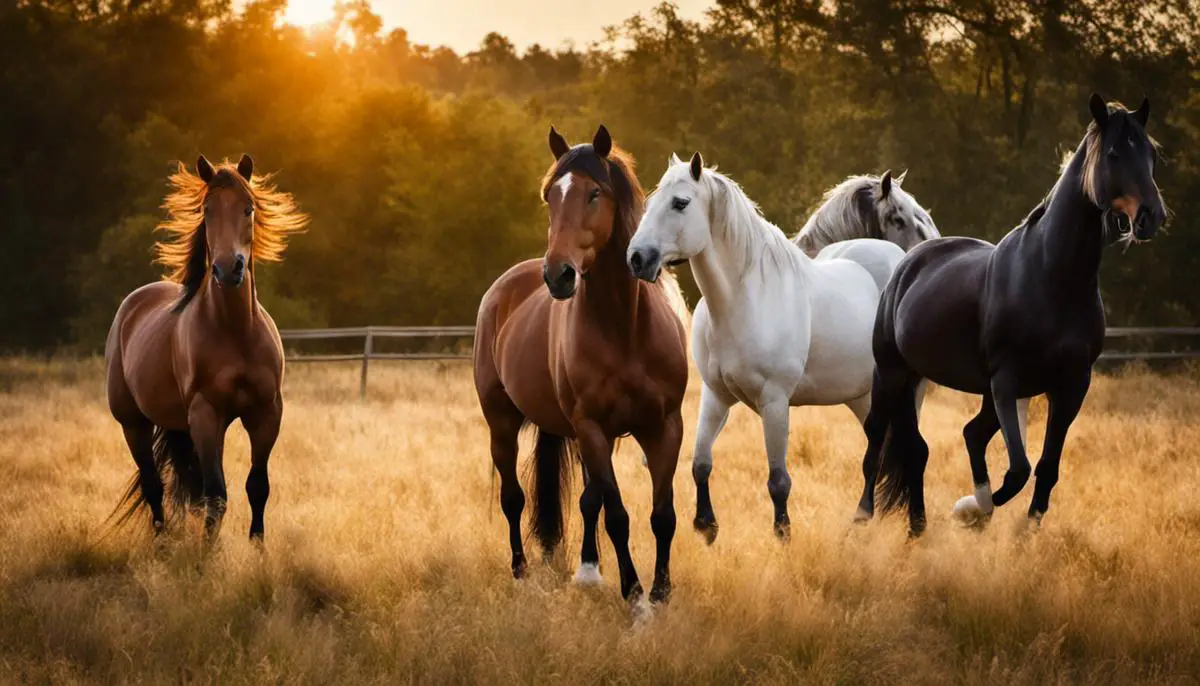
Characteristics and Types of German Coldblood Horses
Unraveling the Robust Nature of German Coldblood Horses
German Coldblood encompasses a range of horse breeds that have emerged within Germany, all of which carry the celebrated Coldblood characteristics – powerful physique, serene temperament, and leisurely pace. These traits are ingrained in their genetic fabric, setting them apart with exceptional durability and vitality, a testament to their inherent resilience.
Different Breeds of German Coldblood Horses
Several breeds of horses are classified under the umbrella term of ‘German Coldblood’. Some of the most notable ones include the Rhenish German Coldblood, the Schleswig Coldblood, the Black Forest Horse, and the South German Coldblood.
-
Rhenish German Coldblood
Originating from the Rhine area of western Germany, this hearty breed is known for its raw strength and vast size. They are generally calm and friendly, making them ideal working horses in agriculture and forestry.
-
Schleswig Coldblood
This breed hails from the Schleswig-Holstein region, and like the Rhenish German Coldblood, they encompass strength and durability. Their muscular build, amicable nature, and versatility make them perfect for both farming and driving.
-
Black Forest Horse
This is a smaller breed of German Coldblood horses, instantly recognizable by their vibrant chestnut coat and flaxen mane. Although smaller and more delicate in appearance in comparison to other German Coldbloods, the breed is notable for its endurance and tenacity.
-
South German Coldblood
This horse is a heavier breed, typically used for draft work. They are characterized by their deep chest, powerful legs, and a docile temperament.
Unique Attributes of German Coldblood Horses
German Coldblood horses are well-known for their physical prowess and large size. They have heavy bodies, muscular legs, and broad chests, attesting to their inherent strength. Their coats come in a variety of colors, including bay, gray, chestnut, and black.
Despite their formidable size, German Coldblood horses are known for their calm and cooperative nature. They are very patient, easy to handle, and are excellent working horses. Their unhurried, steady pace and strength make them invaluable for tasks that require hard labor such as farming, logging, and pulling heavy loads.
This breed of horses is also known to be highly adaptable to harsh weather conditions, a trait that has been honed through centuries of evolution in the demanding German climate.
Understanding German Coldblood Horses
German Coldblood horses are a critical part of the equestrian landscape in Germany. Their influence dates back to ancient times where they served as draft animals, playing a significant role in farming and forestry due to their steadfast reliability. In modern times, these versatile horses are used for a variety of purposes including equestrian events, therapeutic riding, and leisure due to their dependable and calm nature.
Though the advancement of mechanization has lessened their functionality on the agricultural front, the popularity of German Coldblood horses is unwavering. Their enduring historical and cultural significance to the region, combined with their heroic stature and serene disposition have made them popular choices for horse lovers not only in Germany but worldwide.
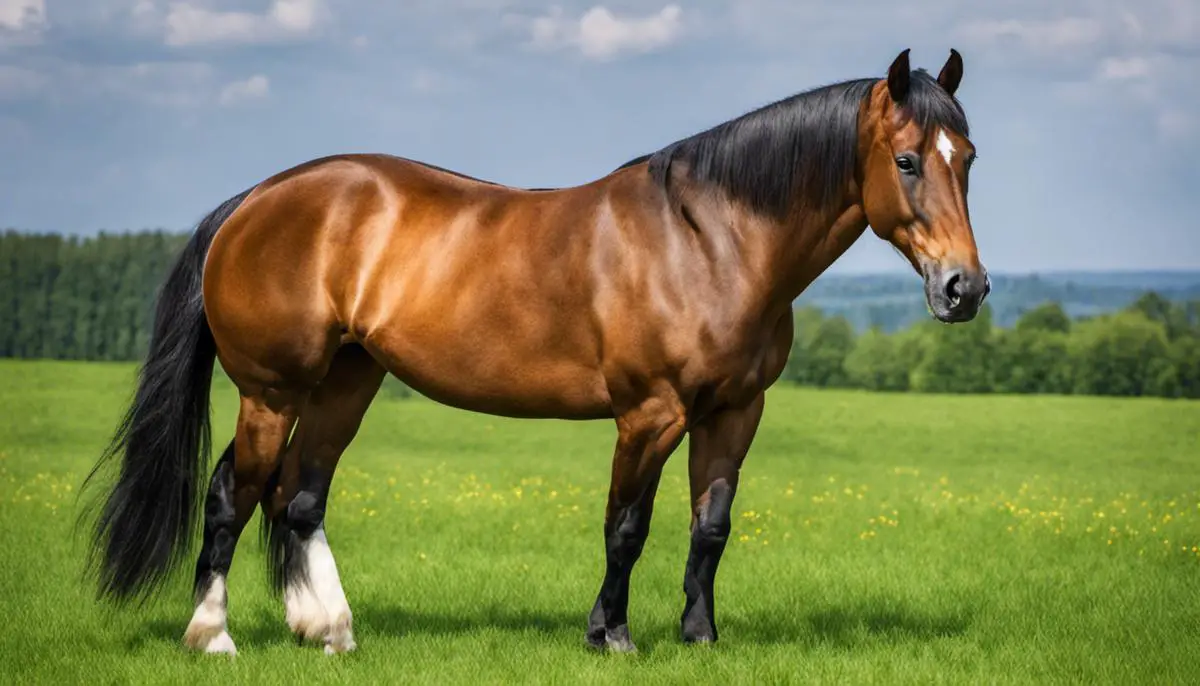
Care and Maintenance of Coldblood Horses
Feeding Guidelines for German Coldblood Horses
The diet of a German Coldblood horse traditionally includes hay, grasses, grains, and necessary supplements, catered to their breed and level of activity. Known as economical eaters, these horses are susceptible to obesity if overnourished. It’s imperative to include a sufficient intake of Vitamins A, D, and E, calcium, phosphorus, and proteins in their diet. A well-rounded diet of forage, cereals, chopped straw, and alfalfa contributes to improved digestion. Maintaining a regular feeding schedule of at least two meals per day is also key to their health and well-being.
Grooming Needs
Proper grooming is integral to the health and wellbeing of Coldblood horses. Regular brushing stimulates blood circulation, which contributes to a healthy coat and helps identify any health issues early. A thorough grooming session includes cleaning the hooves, which helps prevent conditions like thrush and laminitis. Regular bathing and prompt removal of winter hair are required, especially in cold weather, to keep the horse comfortable.
Veterinary Care
Coldblood horses require regular check-ups and vaccinations as recommended by veterinarians. Vaccines against tetanus, equine influenza, equine herpesvirus and rabies should not be missed. Regular deworming at intervals of three months is crucial to maintain their overall health. Dental care is also vital for these horses, with annual examinations recommended to detect early signs of dental problems.
Living Conditions
The sturdy and resilient coldblood horse breeds found in Germany adapt to both outdoor grazing fields and indoor stable environments. These horses thrive in large, open pastures, and their living spaces should provide protection against extreme weather. Regular cleaning of their stalls is necessary to prevent diseases. In winter, additional bedding and heat lamps may be required due to the cold German climate.
General Well-being
In regard to training and exercise, a regular routine can maintain their physical fitness and mental well-being. Despite their reputation for being the workhorse, rest intervals and free roaming time must be scheduled to maintain their happiness and stress levels. Mental health and well-being can be further promoted by socialization with other horses.
Understanding Common Health Concerns
Coldblood horses are generally known for their robust health and relative resistance to disease. Nonetheless, these breeds can be predisposed to genetic health issues like Equine Metabolic Syndrome (EMS), laminitis, and a proclivity for obesity. That’s why ensuring these horses maintain a healthy weight is absolutely critical. Regularly scheduled veterinarian visits can help ensure early detection and intervention for these conditions. The use of scientifically vetted treatments, along with appropriate exercise and dietary management, helps to manage such conditions effectively. Moreover, in Germany, specific genetic disease screening programs are readily available for Coldblood horses.
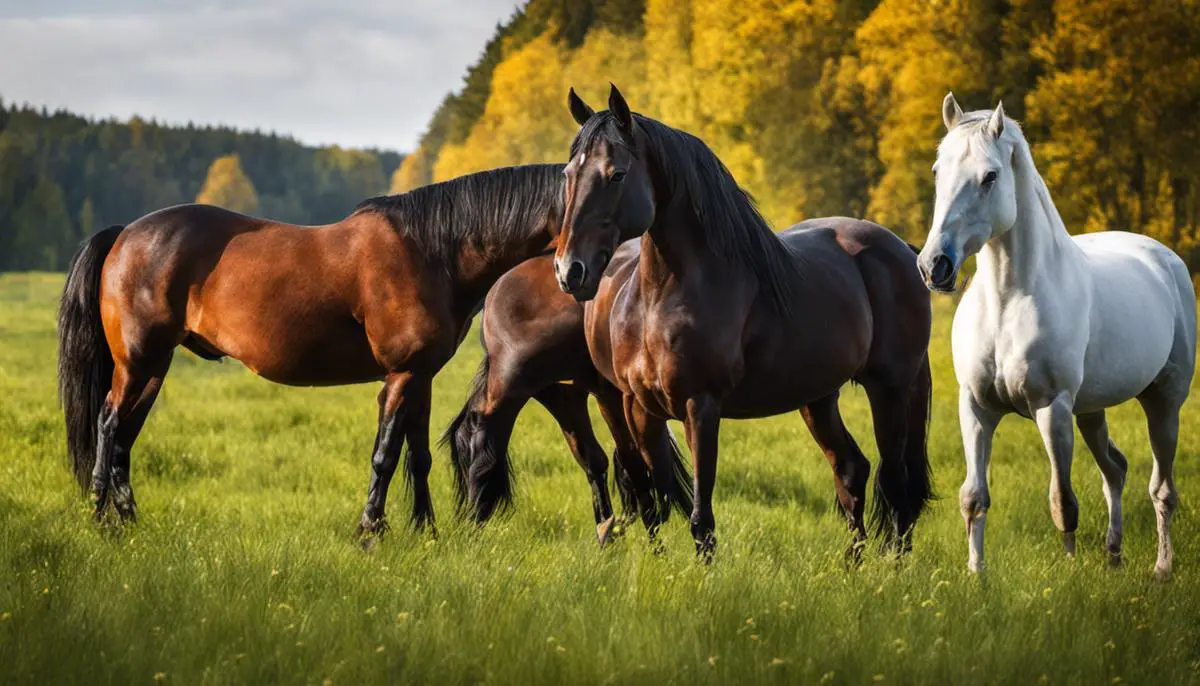
Role of Coldblood Horses in Modern Germany
The Role of Coldblood Horses in Modern German Life
For countless years, Coldblood horses have woven themselves into the fabric of German society and economy, proving to be irreplaceable and invaluable. Though numerous industries have undergone modernization, these equine titans have steadfastly maintained significant roles in various areas of contemporary German life.
Agriculture and Farming
Coldblood horses are primarily used in agriculture due to their calm nature and strength. They are frequently seen pulling plows and other heavy farming equipment, especially in areas where modern machinery is either difficult to use or not economically feasible. The reliability of coldblood horses, coupled with their lower maintenance costs and environmental sustainability, make them a preferred choice for many farmers, particularly those following organic farming practices.
Transportation
The use of coldblood horses in transportation, especially in rural and remote areas of Germany, can still be witnessed. This is particularly true in regions where roads are not vehicle-friendly or where traditional modes of transport are preferred. Coldblood horses are known for their endurance and ability to navigate challenging terrains, making them an effective alternative to motorized vehicles.
Sports and Recreation
In sports and recreational activities, coldblood horses have gained prominence. They are commonly used in carriage driving and horse-riding competitions. Riding schools across the country often have coldbloods as part of their stable, and they are revered by beginners and seasoned riders alike for their docile nature and steady gaits.
Therapeutic Riding
Coldbloods’ calm temperaments also make them ideal for therapeutic riding programs. Mental health professionals in Germany recognize the therapeutic value of interaction with these animals. For individuals coping with physical disabilities or mental health issues, equine therapy involving coldblood horses can provide both physical and emotional benefits.
Conservation and Trending
Despite their significant roles in a multitude of fields, the status of coldblood horses in Germany has seen ups and downs, prompting discussions about their conservation. A multitude of strategies are being implemented to showcase their worth and protect their population. Breeding incentives and economic benefits are frequently proposed to farmers for maintaining these coldblood horses.
Public education efforts, particularly highlighting the cultural and historical value of these horses, are constantly in motion to boost their recognition. These efforts range from curated exhibitions and horse-centric fairs to competitions and other events all focused on coldblood horses. These activities heavily highlight the various functions these horses contribute to in German societal and economic affairs, their objective being to perpetuate their integral role and their future existence.
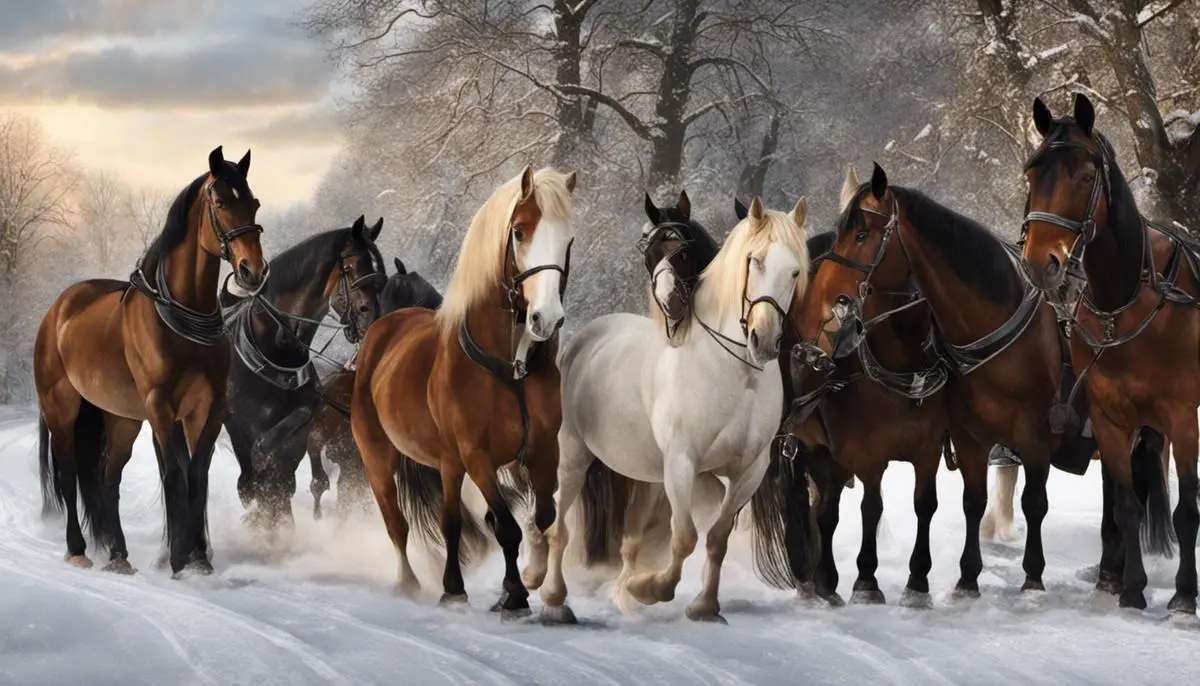
Famous German Coldblood Horses
The Enduring Legacy of East Prussian Coldbloods
Among the most famous German coldblood horses dwells the East Prussian Coldblood, a breed that has carved out a notable chunk in the annals of German equestrian history. This breed, despite almost disappearing following World War II, was successfully resurrected using surviving horses, an achievement that underscores their remarkable resilience and paints a compelling story of survival.
These horses held a substantial role in the society of East Prussia, an area now divided between Russia and Poland. Traditionally known for their exceptional strength and stamina, these horses were used for heavy draft work on farms. Amidst an abundance of stories of triumph and tragedy, these sturdy horses formed an essential part of rural life.
The Success of Black Forest Horses in Competitive Events
Black Forest horses, another famous German coldblood breed, have been tracing their hoofprints in competitive events such as combined driving. Known for their agility, endurance and temperament, these horses have been successful in three-phase events, which include dressage, marathon, and obstacle driving. Notably, despite their bulk, they are agile, quick, and easy to train, all of which contributed to their competitive success.
They are also famous for their unique chestnut color with the flaxen mane and tail, starkly distinguishing them in competitions and shows. The impressive appearances paired with their exceptional performances have made Black Forest horses a favorite amongst equestrians across the globe.
Rhenish German Coldblood: The Drafting Superstar
The Rhenish German Coldblood horses stand out for their extraordinary contribution to society, particularly in agricultural operations. Throughout the 19th and 20th centuries, these horses were the preferred choice for heavy draft work in the Rhineland region of Germany.
With their robust physique and powerful musculature, these horses were adept at plowing fields and carting produce, effectively revolutionizing Germany’s agricultural landscape. Because of their tireless service to the farming sector, Rhenish German Coldbloods hold a legacy as prized possessions and a symbol of strength.
Schleswig Coldblood: The Versatile Competitor
Schleswig Coldblood, the northernmost breed of German horses, has achieved fame in both farm work and competitive events. Not only have they performed agricultural tasks with supreme efficiency, but they have also excelled in horse pulling competitions, showcasing their remarkable strength and power.
These gentle giants have also participated in shows and parades where their amiable temperament and striking appearances have won many hearts.
Despite the mechanization in agriculture these coldblood horse breeds have continued to play a significant role in German rural heritage by maintaining their connection to traditional farming. Their legacy lives on, representing the hard work and determination of rural Germany.

Over time, Coldblood horses have proven to be an integral part of Germany’s cultural panorama, continuing to serve society in multiple ways. Their stature and strength, coupled with their calm demeanour, make them ideally suited for various tasks, be it fieldwork or for recreational riding. They serve as a tangible link to Germany’s historical roots, a living metaphor of the nation’s age-old affinity and respect for nature and animal life. Simultaneously, some Coldblood horses have gone above and beyond, making significant contributions to society at large or in competitive events, becoming celebrated icons in their own right. Therefore, as these horses march on in modern Germany, they not only symbolize the past but shape the future, echoing a timeless bond between humans and horses, a bond that is nurtured through a deep understanding and appreciation.
